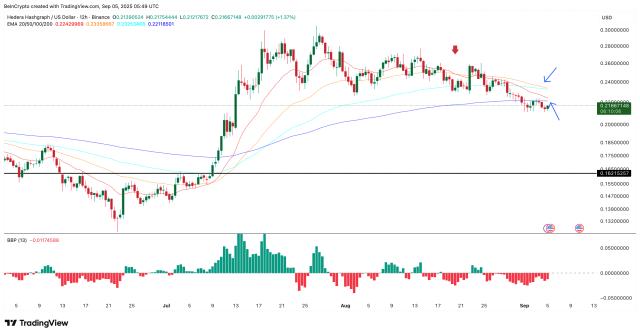The Clarity Act could soon be passed, paving the way for major institutions to bring XRP into mainstream use by clarifying the legal and regulatory framework for DeFi.
Clear regulation will promote ETFs, allow businesses to put crypto on their balance sheets, and enable permissioned DEX solutions and Treasury companies to increase supply pressure on the XRP market.
- The Clarity Act could remove legal uncertainty, promoting institutional adoption of XRP.
- Permissioned DEX enables banks and payers to participate securely and compliantly.
- Treasury companies and Ripple holding XRP in escrow could put downward pressure on supply.
Clarity Act's Impact on XRP
The Clarity Act, if passed, would clarify regulatory Vai , allowing ETFs and businesses to use cryptocurrencies on their balance sheets more safely.
Regulatory clarity is what large institutions need to Tokenize assets and move large amounts on-chain; when regulations are transparent, many of the reasons to stay out are lost and institutional Capital can flow into the XRP ecosystem.
“This is a huge unlock. ETFs will be able to operate, companies can put crypto on their balance sheets, and institutions will feel safe using XRP Ledger.”
Zach Rector, Crypto Analyst — Interview with Paul Barron (YouTube)
Permissioned DEXs — the safe path for banks
Permissioned DEX is a decentralized exchange but limits participants, allowing only verified entities to access liquidation.
This model addresses compliance risks and avoids sanctions; banks and payment institutions can use the same technology as the public XRP community but in a more controlled environment, compatible with KYC/AML standards.
“If SWIFT wanted to create a permissioned DEX on XRP Ledger, they could gather 11,000 member banks and authenticate with certificates that they belong to that liquidation pool.”
Zach Rector, Crypto Analyst — Interview with Paul Barron (YouTube)
Trends in Cryptocurrency Treasury Companies
Treasury companies holding large amounts of XRP on their balance sheets could reduce circulating supply, creating temporary or sustained upward price pressure.
Some funds and companies have XEM holding XRP as a reserve asset; if more institutions follow suit, a supply shortage could occur. However, this activity also carries risks if funds become over-leveraged or sell off when faced with liquidation pressure.
“They are a support for adoption, but if they run too far, they could trigger the next market correction.”
Zach Rector, Crypto Analyst — Interview with Paul Barron (YouTube)
No more excuses
Ripple has been holding billions of XRP in escrow and a loosening stance from regulators could make regulatory reasons no longer a major barrier to project growth.
As regulatory frameworks become clearer and compliance mechanisms are adopted, delays in product deployment and organizational integration will become harder to justify; growth will depend on product capabilities and market strategy rather than legal uncertainty.
How Will the Clarity Act Directly Affect the XRP ETF?
The Clarity Act helps define the regulatory framework, paving the way for ETF approval by reducing regulatory risk and increasing institutional investor confidence.
Is Permissioned DEX significantly different from public DEX?
The main difference is access: permissioned DEXs only allow verified parties to participate, helping with KYC/AML compliance and excluding sanctioned entities.
Can Treasury Companies Drive a Sustainable XRP Price Increase?
Holding large amounts of XRP can create scarcity and push up the price, but sustainability depends on the holding strategy, liquidation , and selling behavior of those companies.
What if the Clarity Act doesn't pass?
Lack of a clear framework could continue to stifle institutional Capital and slow ETF launches or major integrations; the market remains mired in regulatory uncertainty.







